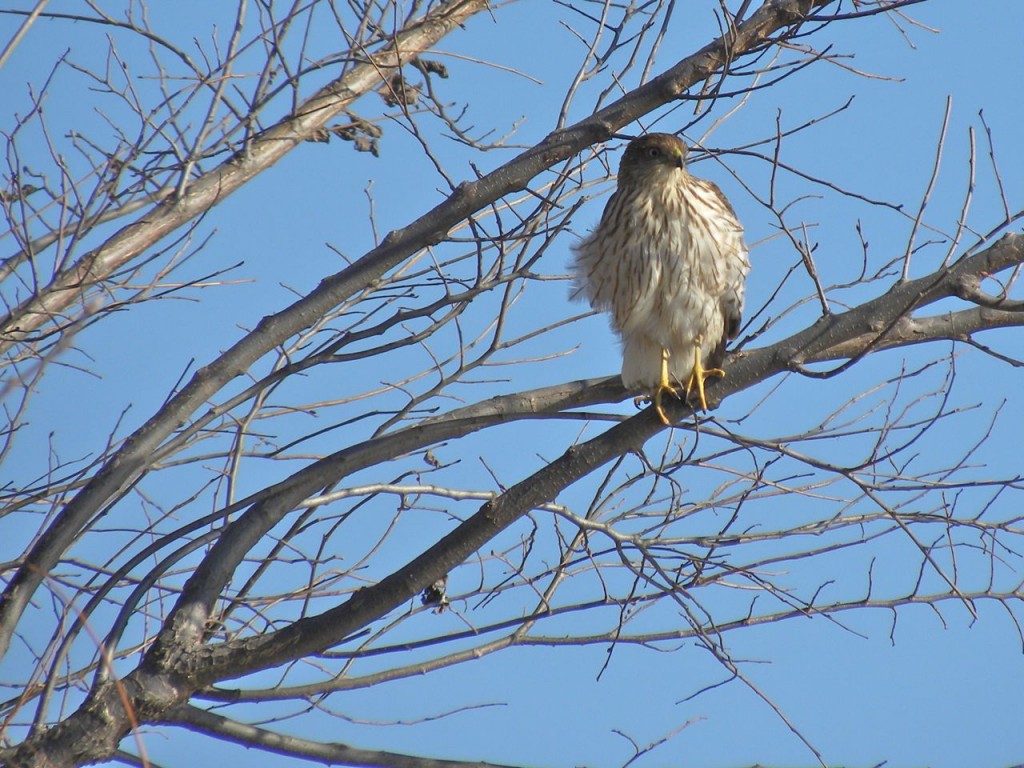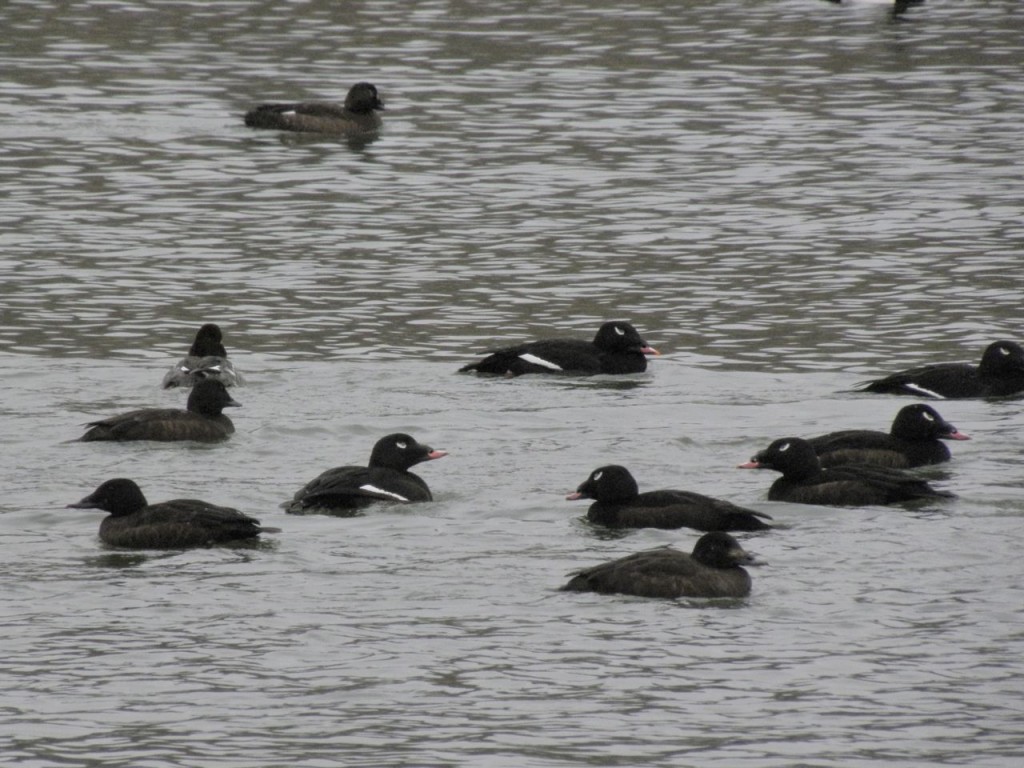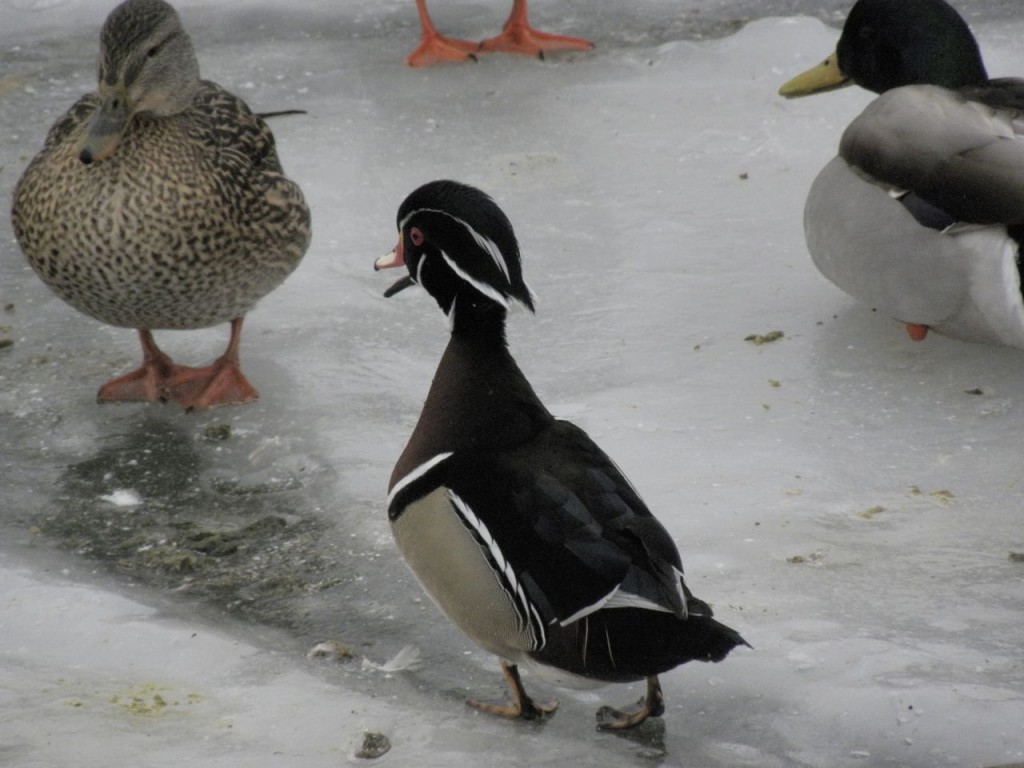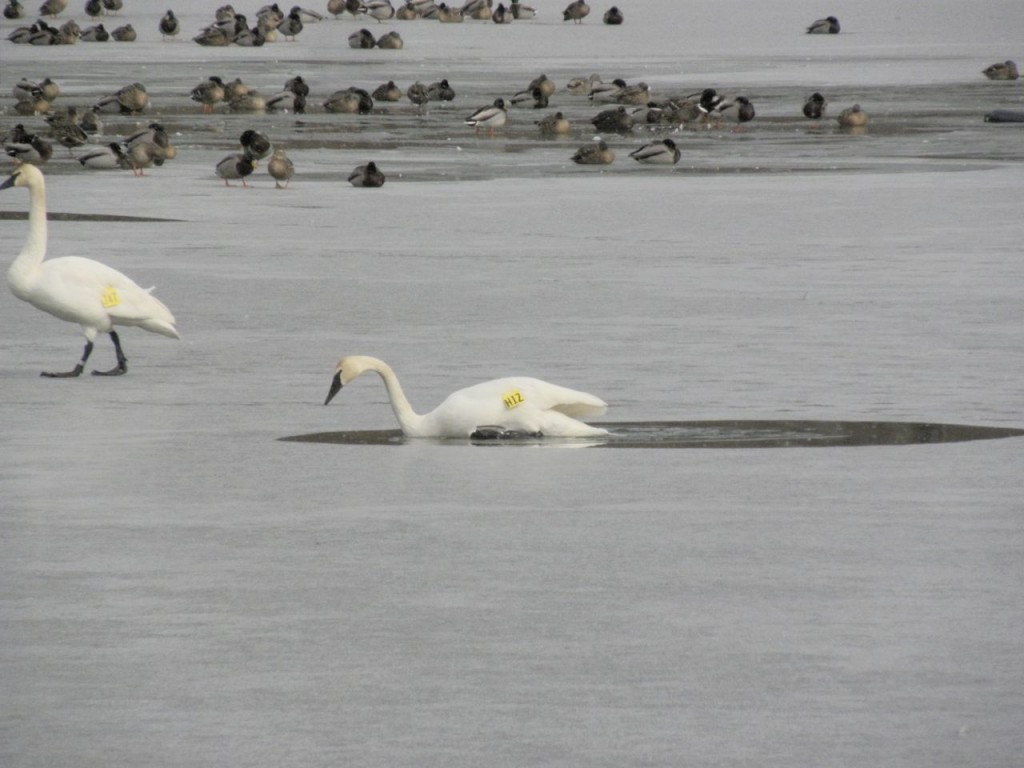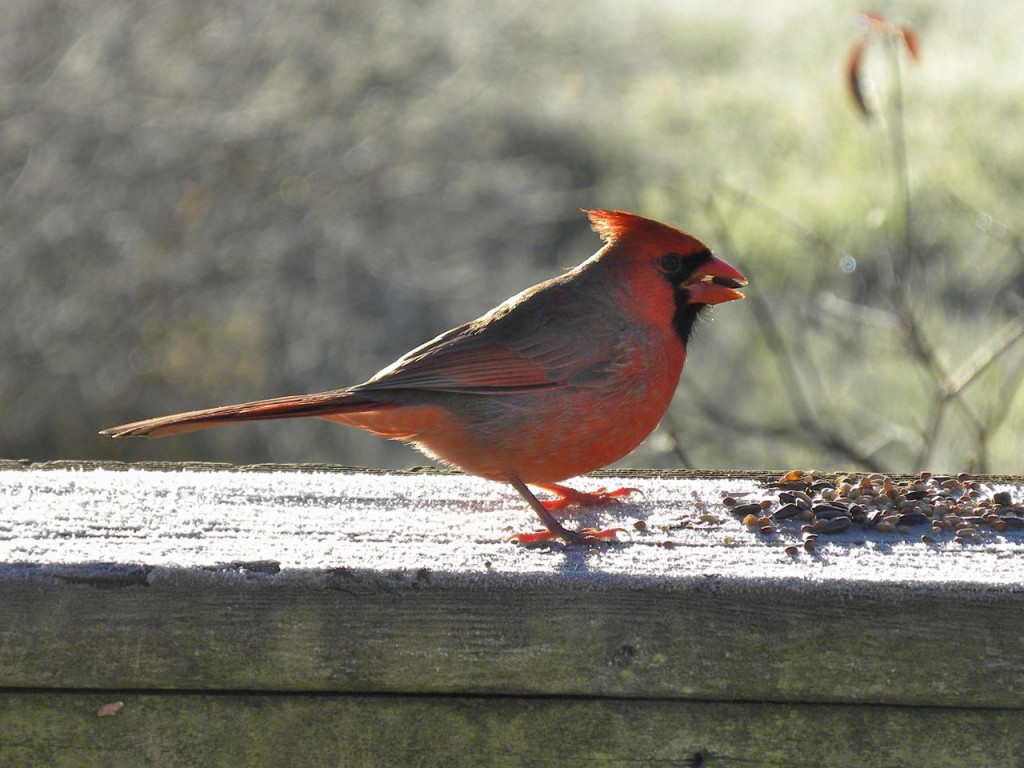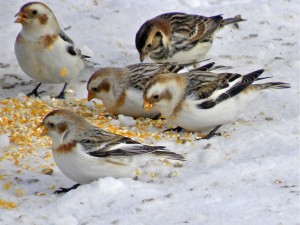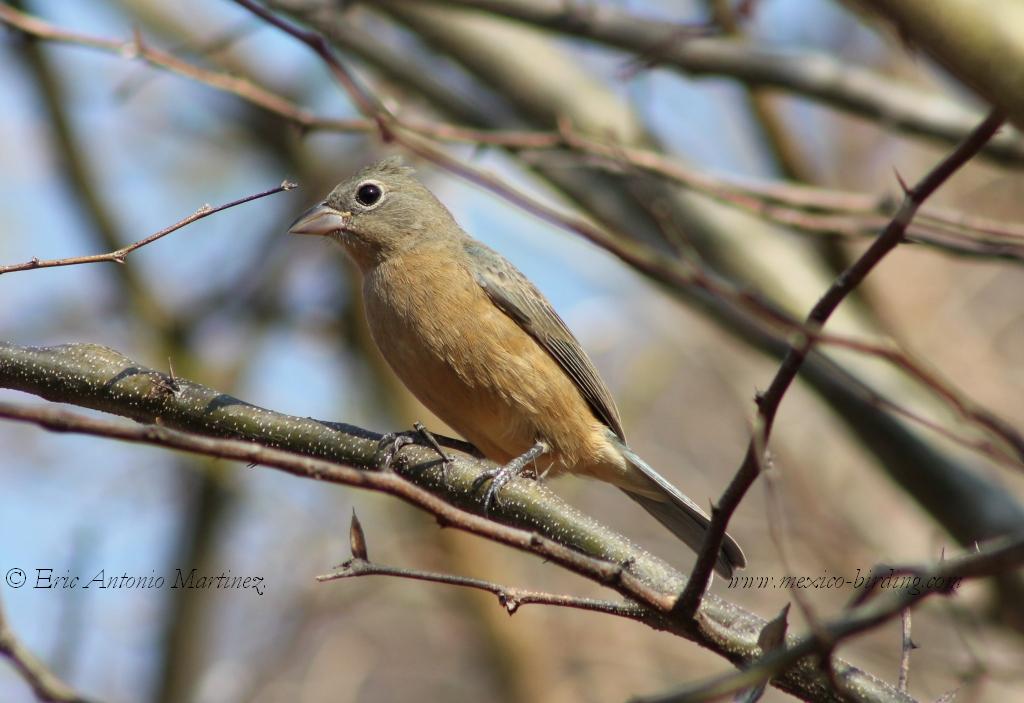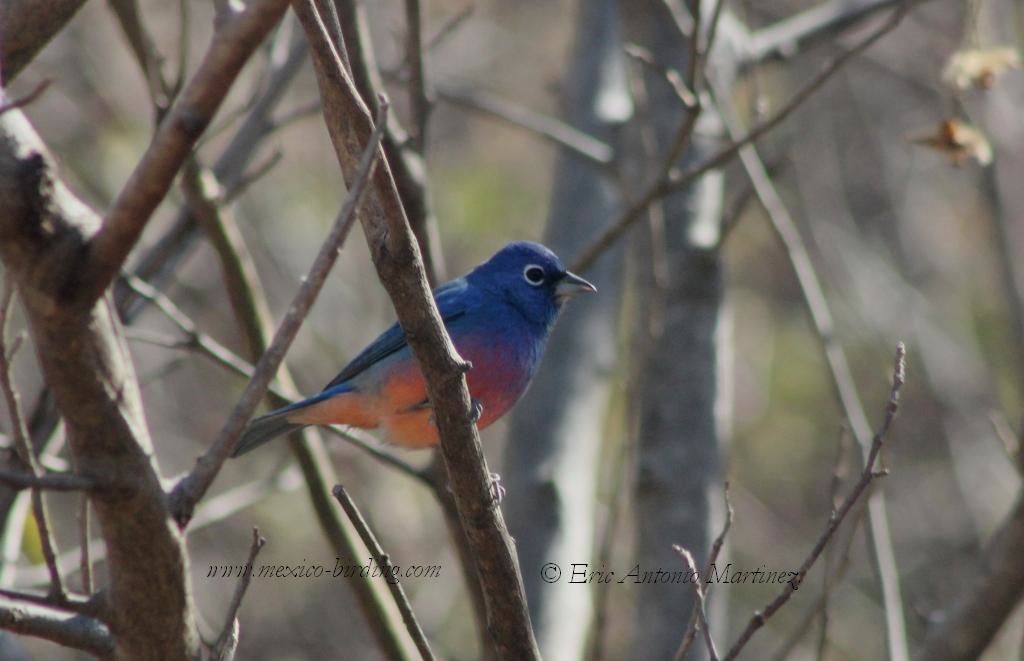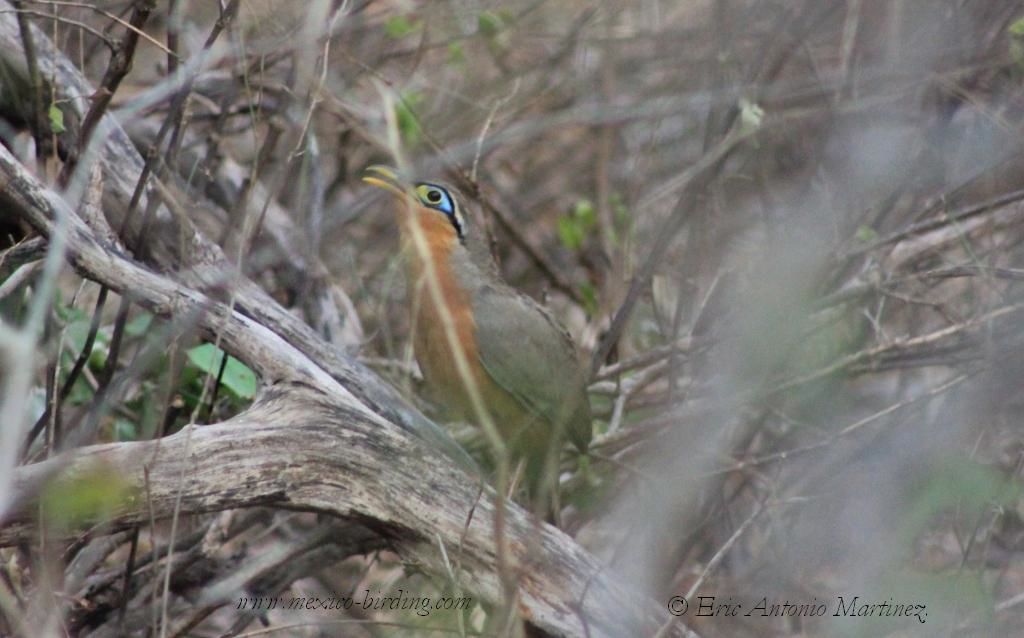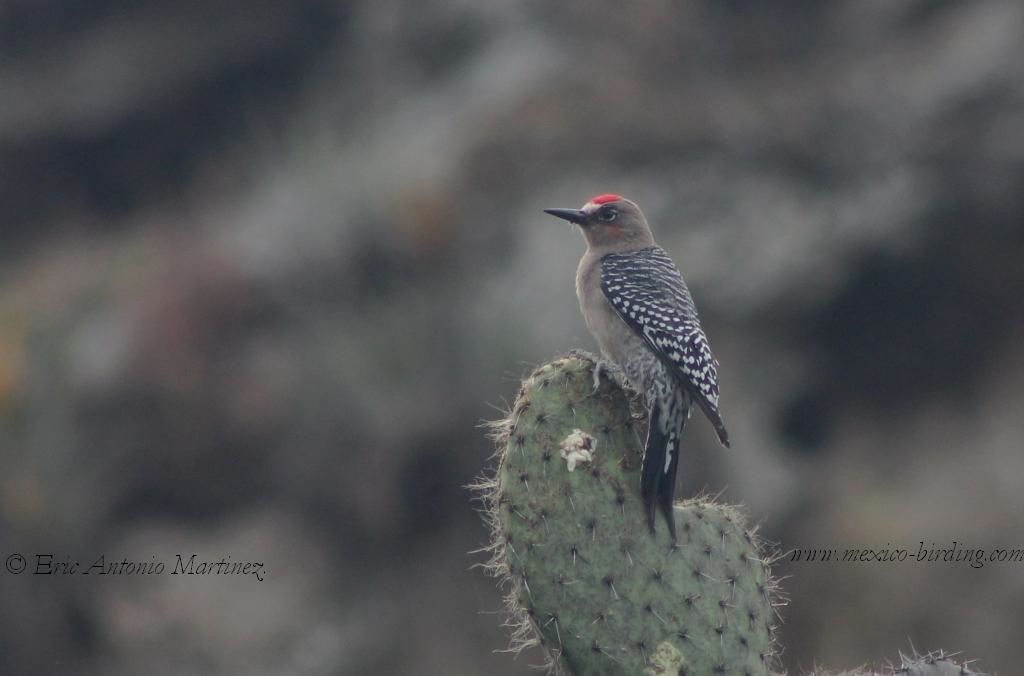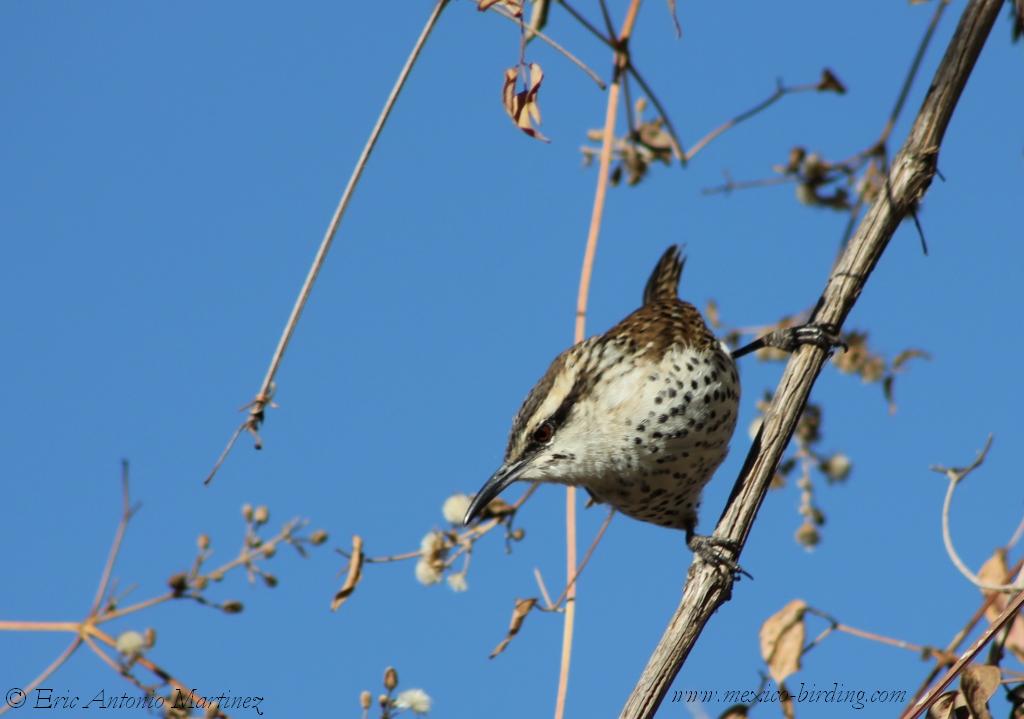February 23 2012. Burlington On. Around mid-day today we were walking down our street, two sons, a daughter-in-law, one small mongrel dog and me. Seeing a quick flash of wings rising from a snow pile at the edge of a neighbour’s lawn, I rather impressed myself with my quick processing of the evidence: a large fast bird; an urban setting; mid- winter; it must be a Sharp-shinned Hawk.
I halted my family, “Stop, stop! Look! There – in that tree. Right in front of you! A Sharp-shinned Hawk.. It just flew up.” We couldn’t quite see it but I was as sure as I could be. Two more paces, and there it was, about four feet off the ground, in the outer branches of a small lilac, almost within touching distance and looking at us. It was a youngster, brown with a streaky breast and it was making barely audible ‘cheep’ sounds. As Sharp-shinned Hawks go it was unremarkable.
My older son looked at me, pityingly I think, and said, “How do you see this stuff?” “Well I just saw it fly up.” I replied. Then we talked about how Sharp-shinned Hawks have learned to prey on unwitting small birds at back-yard feeders, and how I’ve heard from several people tell me about a Mourning Dove or Junco that disappeared in an explosion of feathers from their bird feeder.
He said, ”Cool.”
I thought: Bird of the Day.
